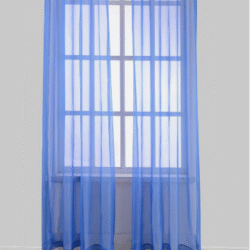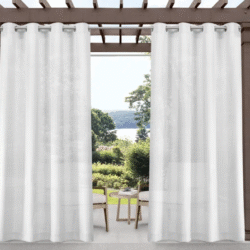roman blind curtain are a timeless and stylish window treatment that seamlessly blends elegance with functionality. Known for their clean lines and soft folds, Roman blinds offer a sophisticated alternative to traditional curtains or modern roller blinds. Whether you’re designing a contemporary living space or aiming for a classic interior look, Roman blinds provide the perfect balance between aesthetics and practicality. In this article, we will explore the features, benefits, and design options of Roman blind curtains, and how they can enhance the ambiance of any room.
What Are Roman Blind Curtains?
Roman blind curtains are a type of window covering that combine the softness of fabric drapes with the functionality of blinds. Unlike traditional blinds made of slats, Roman blinds are made from a continuous piece of fabric that folds neatly into horizontal pleats when raised. When lowered, the fabric lays flat, providing a smooth and clean appearance. Roman blinds are popular for their elegant and timeless design, making them suitable for both modern and classic interiors. They come in various fabrics, patterns, and colors, offering flexibility in style and light control depending on the material used.
Types of Roman Blinds
Sure! Here’s a bullet-point list of the Types of Roman Blinds:
Flat Roman Blinds
- Simple and sleek design
- Fabric lies flat when lowered
- Ideal for patterned fabrics
Hobbled (Looped) Roman Blinds
- Features soft, cascading folds even when fully extended
- Adds a luxurious and traditional look
- Best for formal rooms like living or dining areas
Relaxed Roman Blinds
- Has a gentle curve at the bottom when raised
- Soft and casual appearance
- Perfect for bedrooms or cozy spaces
Balloon Roman Blinds
- Gathered and puffed appearance when raised
- Decorative and romantic
- Often used in vintage or classic interiors
London Roman Blinds
- Combines flat and balloon styles
- Pleated fabric gathers slightly at the bottom sides
- Elegant and ideal for traditional settingsد
Austrian Roman Blinds
- Highly decorative with scalloped folds
- Often made from sheer or lightweight fabric
- Great for creating a soft, theatrical look
Materials and Fabrics Used
Cotton
- Lightweight and breathable
- Easy to clean and maintain
- Works well in most rooms
Linen
- Natural, textured look
- Adds elegance and a relaxed feel
- Ideal for living rooms and bedrooms
Silk
- Luxurious and smooth finish
- Reflects light beautifully
- Best for formal spaces, but may require lining
Polyester
- Durable and budget-friendly
- Resistant to wrinkles and shrinking
- Good for high-traffic areas
Velvet
- Soft, thick, and rich in texture
- Great for blocking light and insulating
- Adds a touch of luxury to any room
Blackout Fabric
- Special lining to block out light completely
- Perfect for bedrooms or media rooms
- Often combined with decorative outer fabrics
Sheer Fabric
- Light and airy
- Allows natural light while maintaining privacy
- Ideal for kitchens or sunrooms
Styling Tips for Roman Blinds
Here are some practical and stylish Styling Tips for Roman Blinds:
- Choose the Right Fabric: Use light fabrics for a casual look and heavier ones for a more formal style. Patterned fabrics can add character, while plain fabrics offer timeless elegance.
- Match with Interior Decor: Coordinate colors and textures with your furniture, walls, and accessories. Neutral tones create a calm space, while bold colors make a statement.
- Layer with Curtains: Pair Roman blinds with side curtains for a luxurious, layered look. This also adds insulation and light-blocking options.
- Use in Smaller Spaces: Roman blinds are ideal for small rooms or windows where traditional curtains may be too bulky. They provide a clean and uncluttered appearance.
- Opt for Blackout Lining in Bedrooms: Choose blackout-lined blinds for better sleep and privacy. Also helps in energy efficiency by reducing heat transfer.
- Install Inside or Outside the Window Frame: Inside mount gives a sleek, built-in look. Outside mount makes windows appear larger and covers more light gaps.
- Keep It Minimal for Modern Interiors: Go for flat or relaxed styles with simple fabrics to complement minimalist decor.
- Add Trims or Borders for Detail: Decorative trims, tapes, or contrasting edges can enhance the visual appeal.
Maintenance and Cleaning Guide
Here’s a Maintenance and Cleaning Guide for Roman blinds in bullet points:
- Regular Dusting: Use a feather duster or a soft cloth to remove surface dust. Dust weekly to keep the fabric looking fresh.
- Vacuuming: Use a vacuum cleaner with a brush attachment. Gently vacuum in a downward motion to avoid damaging the folds.
- Spot Cleaning: Use a mild detergent and water for small stains. Dab gently with a soft cloth—avoid scrubbing.
- Deep Cleaning: For a thorough clean, remove the blinds and hand wash or dry clean depending on fabric type. Always follow the care label instructions.
- Avoid Harsh Chemicals: Do not use bleach or strong cleaners as they may damage or discolor the fabric.
- Check Mechanisms Regularly: Inspect cords, chains, and pulleys to ensure smooth operation. Replace worn or frayed cords for safety and functionality.
- Prevent Sun Damage: Consider lining the blinds or using UV-protective spray to reduce fading over time.
- Professional Cleaning: For delicate or luxury fabrics like silk or velvet, hire a professional curtain cleaning service.
How to Measure and Install Roman Blinds
Measuring for Roman blinds requires accuracy to ensure a perfect fit. First, decide whether you want an inside or outside mount. For an inside mount, measure the width and height of the window recess in three places (top, middle, and bottom for width; left, center, and right for height) and use the smallest measurements to ensure the blind fits properly within the frame. For an outside mount, measure the desired width and height beyond the window frame to cover the area completely, usually adding a few extra inches for better light control and aesthetics.
Installing Roman blinds is relatively simple with the right tools. Begin by marking where the brackets will go, ensuring they are level and properly aligned. Drill holes and attach the brackets using screws. Once the brackets are secure, clip or slide the headrail of the Roman blind into place. Finally, test the operation of the blind by raising and lowering it a few times to ensure it functions smoothly. Always refer to the manufacturer’s instructions for any specific details, especially if the blind has unique mechanisms or features.
Where to Buy Quality Roman Blind Curtains
Quality Roman blind curtains can be found both online and in physical home decor stores. Popular online retailers like Amazon, Wayfair, and IKEA offer a wide selection of styles, sizes, and fabrics to suit various tastes and budgets. For more customized options, consider visiting specialist stores such as Blinds.com or The Shade Store, which allow you to choose materials, colors, and measurements for a tailored fit. Local curtain shops and interior design boutiques also provide personalized service and may offer fabric samples, professional measuring, and installation services. Whether you prefer ready-made or made-to-order blinds, it’s important to choose a trusted seller known for durability, design variety, and customer support.
Benefits of Choosing Roman Blinds
Roman blinds offer several distinct advantages that make them a popular choice for homeowners and interior designers. First and foremost, they provide an elegant and refined aesthetic. Their clean lines and smooth fabric make them ideal for creating a sophisticated look in any room, from modern to classic interiors. Whether you choose a bold pattern or a neutral shade, Roman blinds add a touch of luxury without overwhelming the space.
In addition to their beauty, Roman blinds are incredibly functional. They offer excellent light control, allowing you to adjust the amount of sunlight entering your room with ease. By simply pulling the cord, you can raise or lower the blinds to your desired position. This feature is especially beneficial in rooms where you need to control glare or maintain privacy.
Another major benefit of Roman blinds is their space-saving design. Since they fold neatly when raised, they don’t take up much space, making them perfect for smaller rooms or windows. Unlike traditional curtains that may hang low and create a heavy look, Roman blinds maintain a sleek and compact appearance.
Moreover, Roman blinds can be made from a variety of materials, from lightweight cotton to luxurious velvet or blackout fabrics. This versatility allows you to choose the right material based on the room’s function—whether you need a sheer fabric to filter light or a thick material to provide complete darkness.
Roman blinds are also easy to maintain. With regular dusting and occasional washing, they can stay looking fresh for years. Their simplicity means they don’t require frequent upkeep, making them a low-maintenance option for busy households.
Conclusion
In conclusion, Roman blind curtains are a stylish and versatile choice for any home. With their elegant design, variety of fabrics, and excellent light control, they enhance both the functionality and aesthetics of any room. Whether you prefer the sleek look of flat Roman blinds or the luxurious feel of velvet, there is a style to suit every taste and need. Their space-saving nature, easy maintenance, and customization options make them an ideal window treatment for both modern and traditional interiors. If you’re looking for a sophisticated and practical solution to window coverings, Roman blinds are an excellent option that combines beauty with function.




